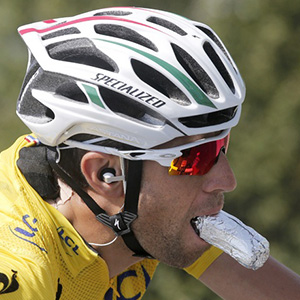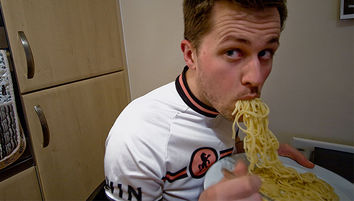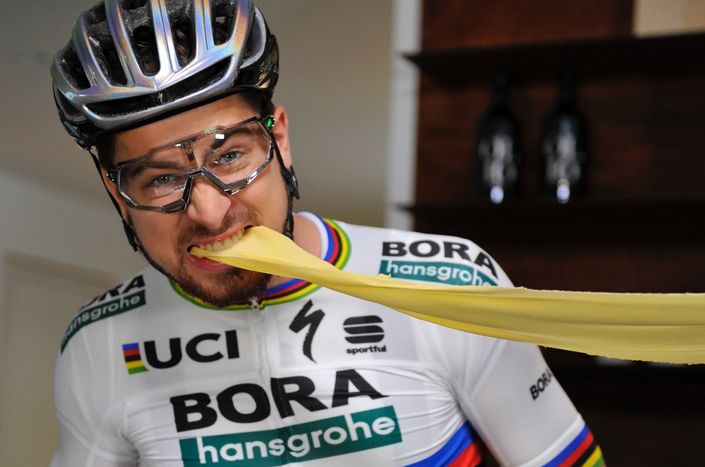We all watch the Tour de France in awe of what these athletes can achieve — day after day, week after week. The conversation around this incredible feat of endurance usually weaves between their intense training regime and their equipment. But what about their diet while on Tour? It's truly fascinating to delve into the diet of a professional cyclist and try comprehending the sheer quantity of food they consume!
During the average Tour De France stage, riders will consume food and drink every hour of the race. In fact, if it weren't for the distant view we see of the peloton, you'd see them eating something all the time, always chewing and always drinking.
You vs. Them
Your diet should consist of around 2,500 calories a day to maintain your current weight. This would be slightly different depending on your size, but you get the idea. An average Tour de France cyclist consumes a whopping 4,500 calories WHILE riding, followed by another 2,000 calories as part of their recovery and normal dietary requirements. That's a total of around 6,000 calories every single day - the equivalent of six pounds of steak!
This is an incredible amount of food, and the process begins as soon as riders awake in the morning. To give you an idea of the eating habits, here's a daily schedule from Garmin Sharp Professional Cycling Team:
Breakfast
Usually four hours before race start, riders consume large quantities of cereals and grains to start the day, along with fruit and yoghurt. Other pastries and breads are also on offer, just to finish things off.
PRE RACE: Before the race starts, riders are given their slow release carbohydrate mix. Usually consumed two hours before race start, this mix consists of a secret concoction of products and totals out at 1 litre of liquid in one go. This drink brings the morning's calorie consumption to over 1,000 calories!
During the race
Riders will constantly snack on products such as what you'd see at your local bike shop. These high carbohydrate and protein mixes keep the riders fueled to avoid excessive calorie loss; the loss that needs to be accounted for at the dinner table every evening. Riders get their food via a musette, or food bag, within the official race feed zones throughout the stage. These bags contain various things depending on the time of day. A feedbag during the morning would contain things that are slightly easier to digest; rice cakes, jam tarts, bars, and other snacks are all favorites.
Lunch

image: thewire.com
Teams try to maintain a normal meal routine by offering more substantial foods — things normally eaten for lunch: small sandwiches, paninis, cakes, polenta squares, boiled potatoes, and more rice cakes, are all on offer. These items are easy to eat, consist of quite a bit of moisture (easier to eat), and all offer slow release carbohydrates.
Nearing the end of the stage, riders can risk consuming pure sugar as a final boost. Doing this earlier in the day would result in a major sugar crash, but if timed correctly, riders will be finished riding before this occurs. This is when you see riders consuming cans of cola or other soft drinks, just as a last boost for the finish.
In between all this, riders are always eating gels and bars. If you can breathe, you can eat!
Recovery Time
Once the stage is finished, riders immediately commence their recovery process. As soon as the team boards their private bus, they are offered hydration drinks very high in electrolytes. This is then followed by plain flavoured foods such as eggs, pasta, rice, and bread. A protein drink follows, and then plenty of water while en route to the hotel for the night.
(Interestingly, winning a stage is a big disruption to a team. It throws out their eating routine, as they wait for their winning rider or tend to greater than normal media commitments.)
Dinner
The biggest meal of the day consists of nutrient-rich foods that are appealing to all riders on the team. After eating all day, it's important to make eating more appealing when riders simply want to sleep... Curry beef on plain rice could be an option, or pasta and rice dishes. These meals are usually accompanied by salads, side dishes, vegetables, and breads.
Dessert could be anything that seems appealing, but it's usually something like a pastry to top up that all important calorie count.
Did You Know?
Many professional cyclists take bowel support supplements, as they can develop bowel irritations due to such extreme eating habits, especially when on Tour.
After all this eating, you'd think there's little time for anything else. Don't forget to fit in a massage (usually before dinner), as well as the occasional doping control visiting your hotel. Then there are the after-effects of all this eating, as well as getting ready for the coming day. Media commitments come in many forms, especially through riders maintaining their social media profiles (something that can't be missed), then the phone calls to family and friends, before finally heading to bed.
If you had a slice of cake today, relax... You'll fit dinner in!
Editor's Note: This article was originally published Sunday, Aug 3, 2014, and has been revised for images, editing and accuracy. Previously revised Jul 16, 2017.

RELATED ARTICLE:
Cycling nutrition for the new year
If you're looking to improve your cycling this year, try focusing on your diet and nutrition first. BikeRoar brings you a guide to bicycling nutrition for the new year... READ MORE

RELATED ARTICLE:
What NOT to eat when cycling
There are many ways to fuel your body, but also many ways Not to. Here is what to avoid... READ MORE




